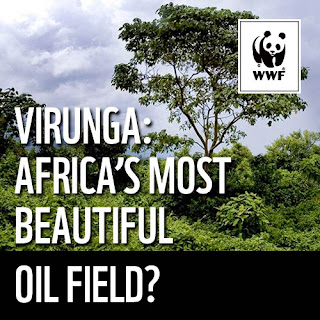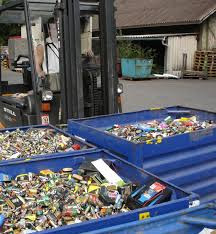The destruction of this World Heritage Site
It gets its name from the Virunga Mountains in the South and stretches to the Rwenzori Mountains to the North of the eastern Democratic Republic of Congo. It was made a World Heritage Site in 1979 by UNESCO. The face of this park could dramatically change in recent times due to the imminent threat oil companies pose to the ecosystem and wildlife of Virunga National Park. |
| Mountain gorillas, found in Virunga National Park, are now listed as one of the most critically endangered species in the World |
The documentary "Virunga" and the people on the front line
Orlando von Einsiedel travelled in Virunga back in 2012 to document to positive progress made by the park authorities in their conservation efforts and successful tourism initiatives in the area. In the same year a rebellion broke out in the Democratic Republic of Congo. Political instability in this area has, in the past, encouraged land invasions and poaching. Little did he know that the real imminent threat would come from a multi national corporation called SOCO International.
The company had been offering bribes to the park rangers to ease their way into exploiting the terrain at Virunga National Park. The film also exposes the vulnerable position of the park rangers, who are sent harassing and intimidating emails from SOCO International.
The actions of SOCO International can at best be described as careless towards the environment and ruthless towards the people and communities who live and dedicate their lives to the maintenance and protection of this World Heritage Site.
The Academy Award nominated documentary about Virunga can now be seen on Netflix. Since the release of the film donations to the park have tripled compared to the previous year. Sustainable tourism is also on the rise and positively impacting the area, because more money can be put into conservation efforts.
Tags: Oil companies want to have their cake and eat it in Virunga
The company had been offering bribes to the park rangers to ease their way into exploiting the terrain at Virunga National Park. The film also exposes the vulnerable position of the park rangers, who are sent harassing and intimidating emails from SOCO International.
The future for Virunga
Although SOCO has committed to stop it's explorations within Virunga National Park, it's personnel and offices remain present in the National Park. This is extremely worrying for the park rangers, as SOCO has only committed to stop it's explorations for the time being, It's remaining presence in the area could indicate future intentions for exploitation of the land.Current appeal from UNESCO and WWF
The World Wide Fund (WWF), continue to monitor the situation in the park and have desperately appealed to the government of the Democratic Republic of Congo to cancel all oil exploitation permits. UNESCO has also requested the government to put a stop to oil exploitation permits. These organisations require the support of the public to protect Virunga National Park and for it to be secure for the future.The actions of SOCO International can at best be described as careless towards the environment and ruthless towards the people and communities who live and dedicate their lives to the maintenance and protection of this World Heritage Site.
The Academy Award nominated documentary about Virunga can now be seen on Netflix. Since the release of the film donations to the park have tripled compared to the previous year. Sustainable tourism is also on the rise and positively impacting the area, because more money can be put into conservation efforts.
Tags: Oil companies want to have their cake and eat it in Virunga




